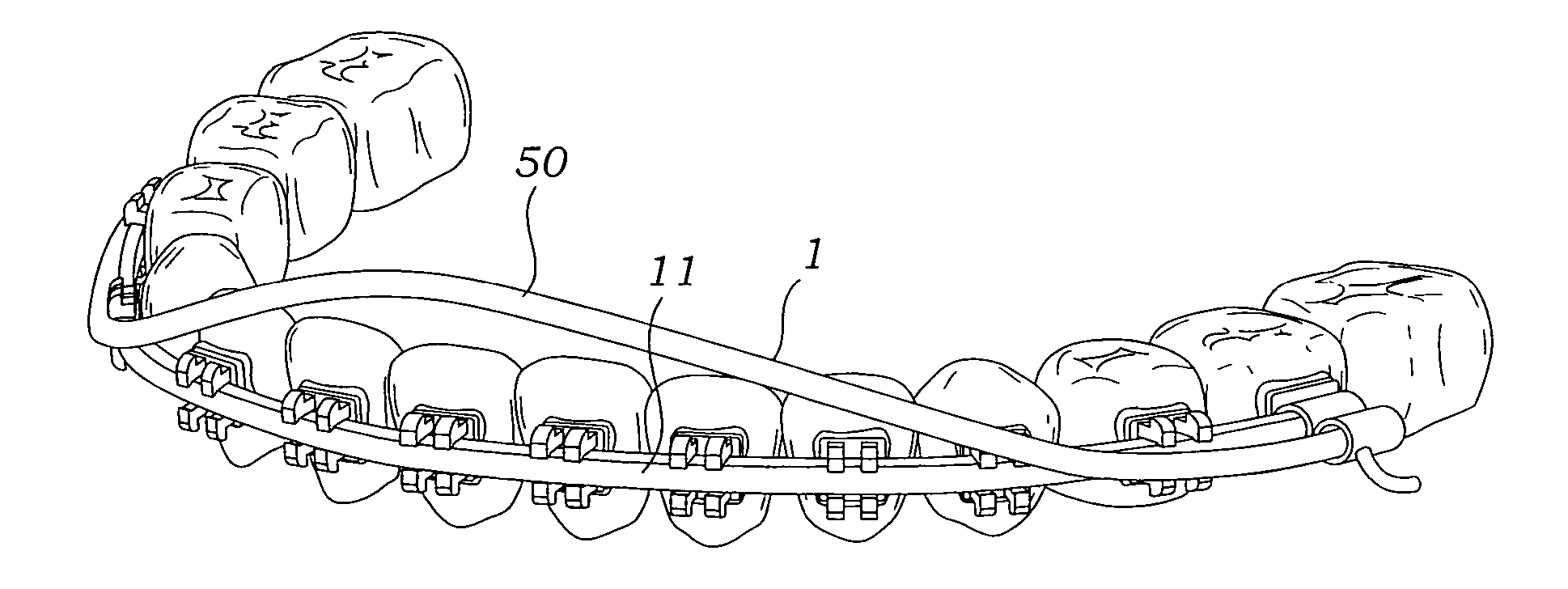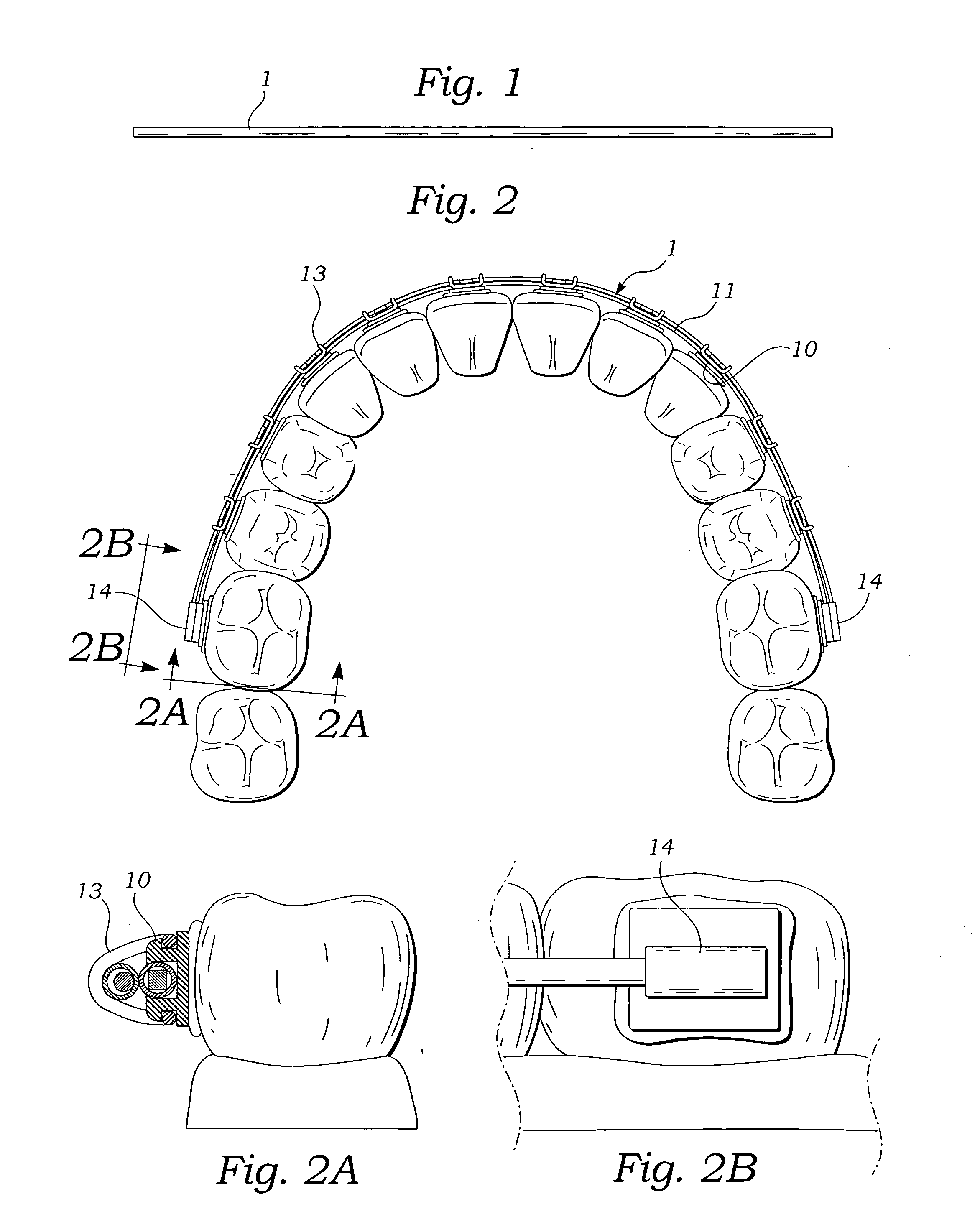Orthodontic accessory arch bar
a technology accessory brackets, which is applied in the field of orthodontic accessory brackets, can solve the problems of insufficient strength of orthodontic arch wires to quickly correct the bite and finish the case, the difficulty of lingual wire placement, etc., and achieve the effect of quick widening the molar arch width
- Summary
- Abstract
- Description
- Claims
- Application Information
AI Technical Summary
Benefits of technology
Problems solved by technology
Method used
Image
Examples
Embodiment Construction
[0032] Referring to FIGS. 1-13 the accessory arch bar 1 is a wire of sufficient length to be attached, or piggy-backed to an installed orthodontic arch wire 11. The arch bar diameter can be 0.020-0.60 inch. The cross section of the arch bar is usually circular but can be other shapes, such as square or rectangular. The composition of the arch bar can be stainless steel. In a preferred embodiment the arch bar 1 is 0.027 inch in diameter and comprised of Ti beta 3 wire. In this embodiment the arch bar 1 is gentle for the patient, but because of its memory moves the teeth quickly.
[0033] As shown in FIG. 2, an orthodontic appliance is comprised of brackets 10 placed on the outer surface of the patient's teeth 12. An arch wire 11 is connected to the brackets 10 and held in place with ties 13 which can be metal wire or elastomeric eyelets. In FIG. 3 the accessory arch bar 1 is shown attached to the orthodontic appliance using the same ties 13 which ligate the arch wire 11 to the orthodon...
PUM
 Login to View More
Login to View More Abstract
Description
Claims
Application Information
 Login to View More
Login to View More - R&D
- Intellectual Property
- Life Sciences
- Materials
- Tech Scout
- Unparalleled Data Quality
- Higher Quality Content
- 60% Fewer Hallucinations
Browse by: Latest US Patents, China's latest patents, Technical Efficacy Thesaurus, Application Domain, Technology Topic, Popular Technical Reports.
© 2025 PatSnap. All rights reserved.Legal|Privacy policy|Modern Slavery Act Transparency Statement|Sitemap|About US| Contact US: help@patsnap.com



